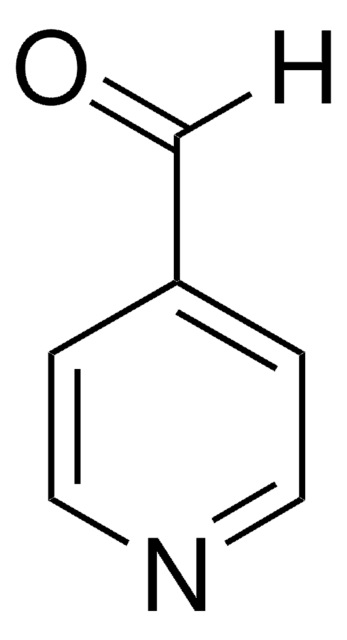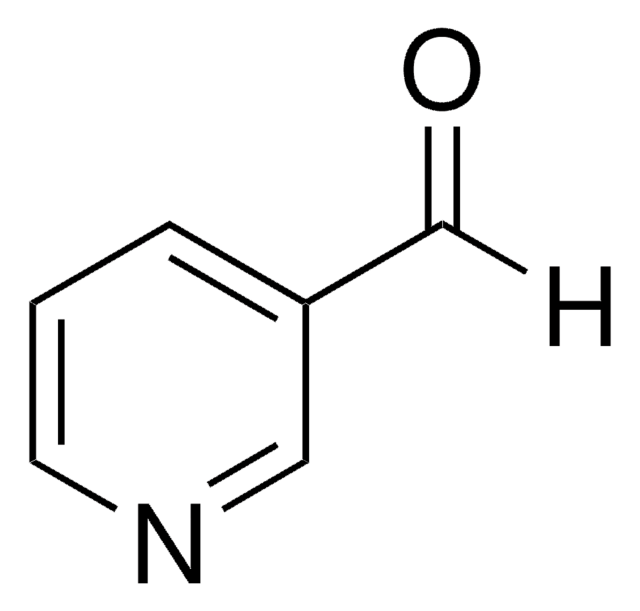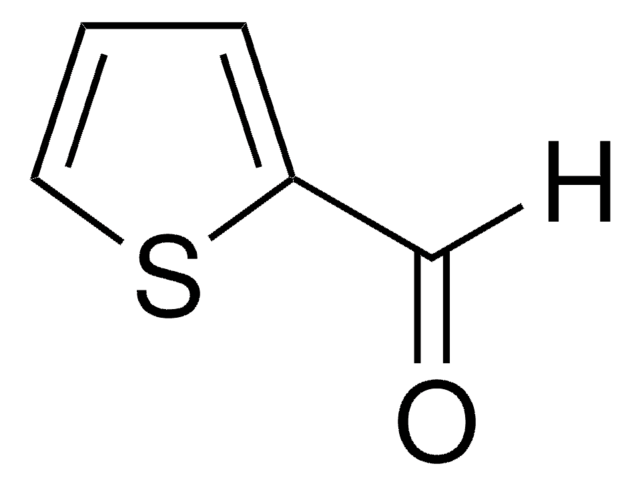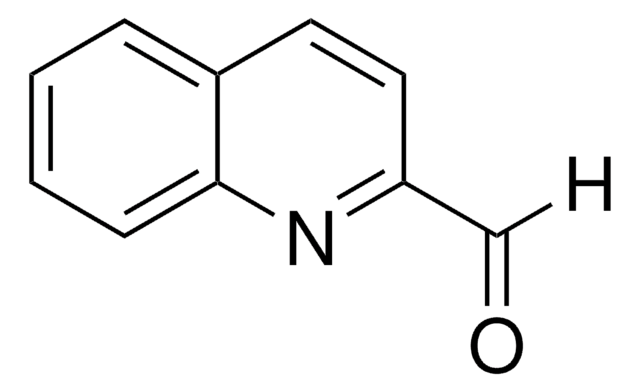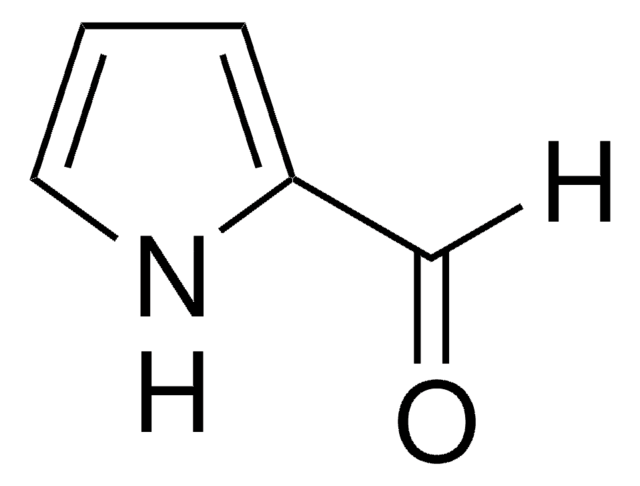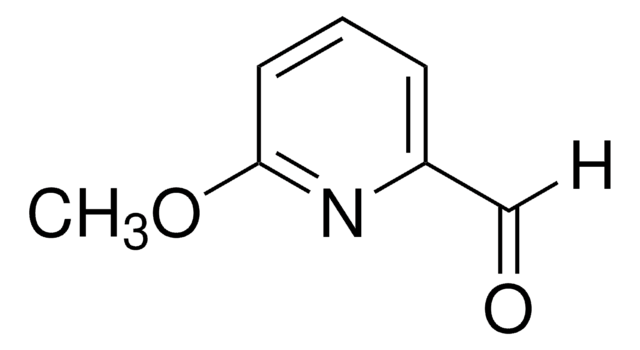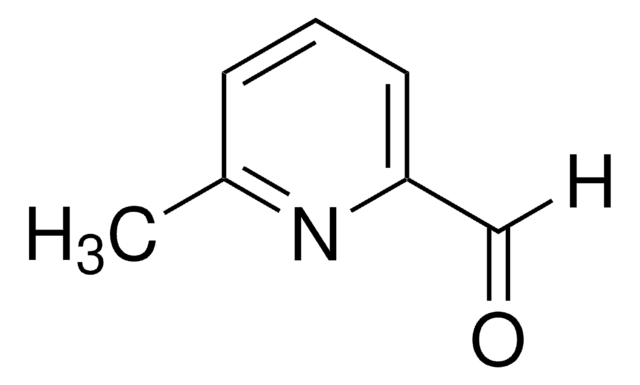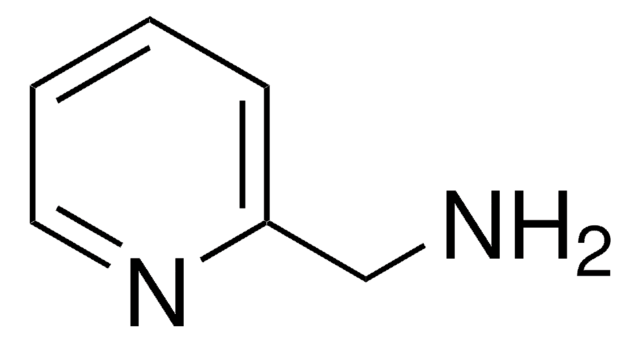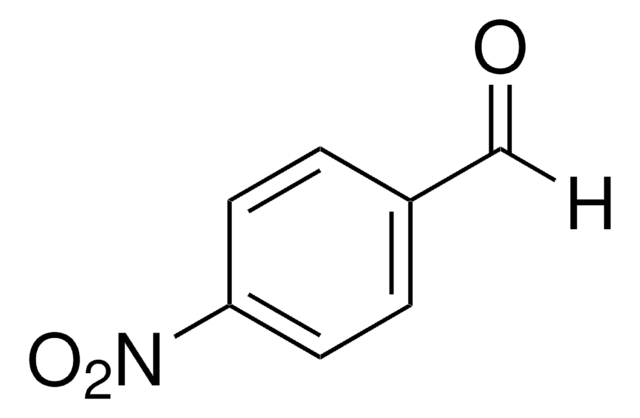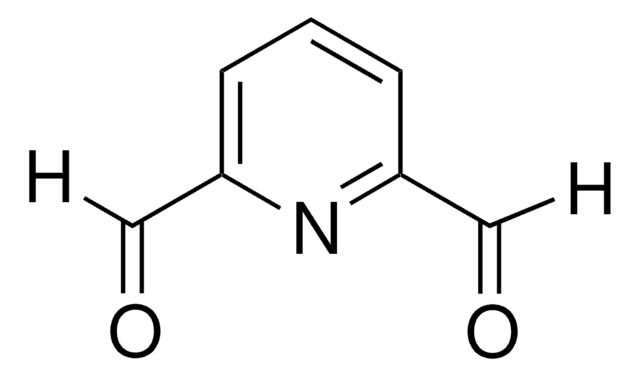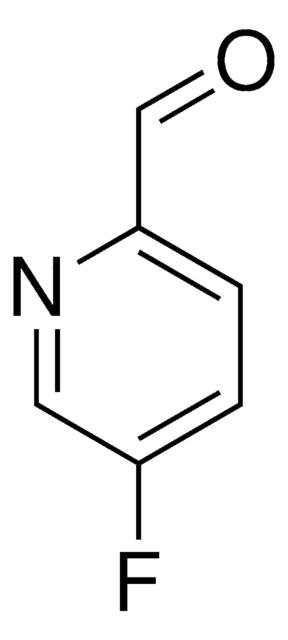P62003
2-Pyridinecarboxaldehyde
99%
Synonyme(s) :
Picolinaldehyde, Pyridine-2-aldehyde
About This Item
Produits recommandés
Niveau de qualité
Pureté
99%
Indice de réfraction
n20/D 1.536 (lit.)
Point d'ébullition
181 °C (lit.)
Densité
1.126 g/mL at 25 °C (lit.)
Température de stockage
2-8°C
Chaîne SMILES
[H]C(=O)c1ccccn1
InChI
1S/C6H5NO/c8-5-6-3-1-2-4-7-6/h1-5H
Clé InChI
CSDSSGBPEUDDEE-UHFFFAOYSA-N
Vous recherchez des produits similaires ? Visite Guide de comparaison des produits
Catégories apparentées
Application
- To synthesize chitosan based bifunctionalized adsorbent.
- In the aldol addition reaction with pyruvate in the presence of 2-keto-3-deoxy-6-phosphogluconate aldolase (KDPG) catalyst to form (S)-4-hydroxy-2-keto-4-(2′-pyridyl)butyrate.
- In the condensation reaction with (S)-(−)-α-methylbenzylamine and (R)-(+)-α-methylbenzylamine to synthesize two chiral (S)-(−)- and (R)-(+)Schiff base compounds.
It can also be combined with thiosemicarbazide to form 2-pyridinecarboxaldehyde thiosemicarbazone ligand (L) which can further complex with Ni(II) and Cu(II) salts (MX) to form [M(L)2X2] complexes.
Mention d'avertissement
Danger
Mentions de danger
Classification des risques
Acute Tox. 2 Inhalation - Acute Tox. 4 Oral - Eye Dam. 1 - Skin Corr. 1B - Skin Sens. 1
Code de la classe de stockage
6.1A - Combustible acute toxic Cat. 1 and 2 / very toxic hazardous materials
Classe de danger pour l'eau (WGK)
WGK 2
Point d'éclair (°F)
170.6 °F
Point d'éclair (°C)
77 °C
Équipement de protection individuelle
Eyeshields, Faceshields, Gloves, type ABEK (EN14387) respirator filter
Faites votre choix parmi les versions les plus récentes :
Certificats d'analyse (COA)
Vous ne trouvez pas la bonne version ?
Si vous avez besoin d'une version particulière, vous pouvez rechercher un certificat spécifique par le numéro de lot.
Déjà en possession de ce produit ?
Retrouvez la documentation relative aux produits que vous avez récemment achetés dans la Bibliothèque de documents.
Les clients ont également consulté
Notre équipe de scientifiques dispose d'une expérience dans tous les secteurs de la recherche, notamment en sciences de la vie, science des matériaux, synthèse chimique, chromatographie, analyse et dans de nombreux autres domaines..
Contacter notre Service technique